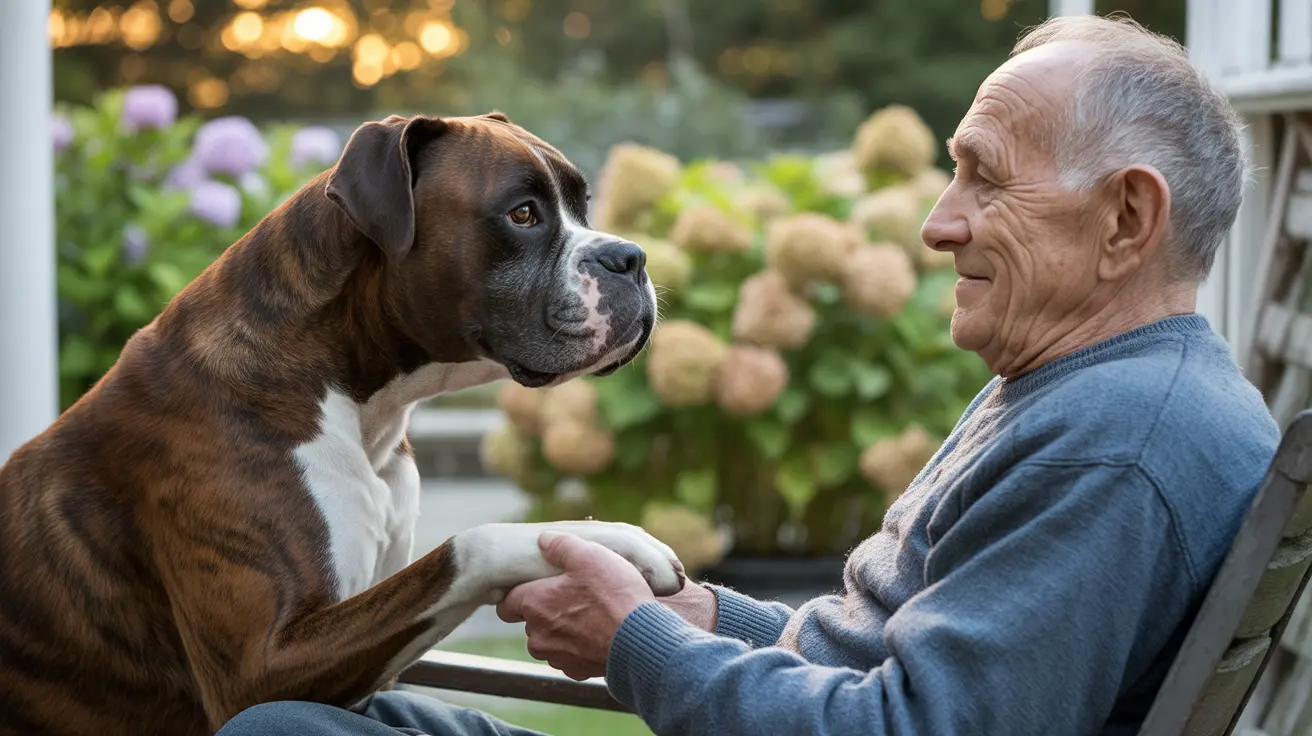Dogs have long amazed us with their extraordinary ability to perceive changes in human health and emotional states. Their remarkable sensitivity to human conditions, particularly when it comes to sensing death, has been documented through countless stories and observations across cultures and throughout history. This article explores the fascinating ways dogs respond to and potentially detect approaching death in humans, backed by scientific research and expert insights.
From their incredible olfactory capabilities to their deep emotional intelligence, dogs possess unique abilities that may help them recognize when someone is nearing the end of life. Understanding these capabilities can help us better appreciate our canine companions and their role in providing comfort during difficult times.
The Science Behind Dogs' Ability to Sense Death
Dogs possess approximately 300 million olfactory receptors in their noses, compared to humans' mere 6 million. This extraordinary sense of smell, combined with a brain region dedicated to scent analysis that's 40 times larger than ours, enables them to detect subtle chemical changes in the human body.
When a person is approaching death, their body undergoes various biochemical changes that produce distinct odors. These can include changes in hormone levels, organ function, and the release of stress-related compounds. Dogs' superior olfactory capabilities allow them to detect these subtle alterations, potentially explaining their apparent ability to sense impending death.
Observable Behavioral Changes in Dogs
Physical Signs and Actions
When dogs sense someone may be dying, they often exhibit distinct behavioral changes:
- Increased vigilance or alertness
- Refusing to leave the person's side
- Gentle physical contact like nuzzling or careful licking
- Changes in sleeping patterns or eating habits
- Unusual vocalization patterns
Emotional Responses
Dogs may also display emotional reactions when sensing death:
- Increased protective behavior
- Notable anxiety or restlessness
- Unusual clinginess to the dying person
- Apparent depression or withdrawal
- Attempts to comfort family members
The Role of Empathy and Emotional Intelligence
Beyond their physical capabilities, dogs possess remarkable emotional intelligence. They can pick up on subtle changes in human body language, vocal patterns, and emotional states. This sensitivity allows them to respond to the grief and anxiety often present in households where someone is dying.
Research has shown that dogs can detect human emotions through chemosignals and respond accordingly, often offering comfort and support when their humans are distressed. This emotional attunement may contribute to their apparent ability to sense death.
Scientific Evidence and Expert Perspectives
While anecdotal evidence of dogs sensing death is abundant, scientific research provides a more measured view. Studies have confirmed dogs' ability to detect various medical conditions, including certain cancers and imminent seizures, through scent detection. However, their specific ability to predict death remains largely based on observational evidence rather than controlled scientific studies.
Frequently Asked Questions
How do dogs detect when a person is nearing death?
Dogs primarily use their acute sense of smell to detect biochemical changes in the human body, combined with their ability to notice subtle changes in behavior and body language. Their superior olfactory capabilities allow them to perceive alterations in body chemistry that often occur during the dying process.
What behaviors do dogs typically show when they sense a human is dying?
Common behaviors include increased vigilance, refusing to leave the person's side, gentle physical contact like nuzzling, changes in sleeping or eating patterns, and displays of anxiety or protective behavior. Some dogs may also become more withdrawn or show signs of depression.
Are dogs really able to smell biochemical changes related to death in humans?
Yes, scientific evidence confirms that dogs can detect various biochemical changes in the human body. Their powerful sense of smell allows them to identify volatile organic compounds associated with different medical conditions, including those present during end-of-life stages.
Why do some dogs stay close or become clingy around dying family members?
Dogs often become clingy due to their strong emotional bonds and ability to sense distress. They may recognize changes in their human's scent, behavior, or routine, and respond by staying close to offer comfort or seeking reassurance themselves.
Can all dogs sense death, or does it depend on the dog's personality and bond?
The ability to sense death varies among dogs based on factors including their individual sensitivity, personality, training, and the strength of their bond with the person. Some dogs may be more attuned to these changes than others, and not all dogs will display obvious reactions.
Conclusion
While the exact nature of dogs' ability to sense death remains somewhat mysterious, their extraordinary sensory capabilities and emotional intelligence clearly enable them to perceive and respond to end-of-life situations in meaningful ways. Whether through their incredible sense of smell, emotional sensitivity, or combination of both, dogs continue to demonstrate their unique capacity to provide comfort and companionship during life's most challenging moments.






